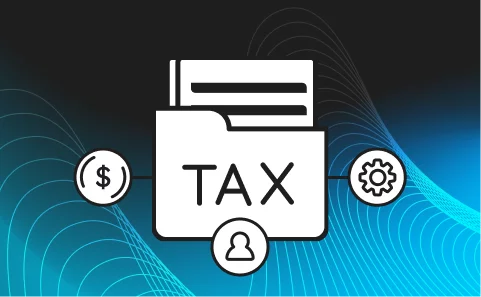Blog
Understanding the Tax Implications of Side Letters and Special Allocations

BY Scott Turner
May 29
Understanding the Tax Implications of Side Letters and Special Allocations
What Are Side Letters and Special Allocations?
Side Letters Defined
Side letters are bespoke agreements between a fund and individual Limited Partners (LPs), supplementing the main fund documentation. They often grant specific rights or accommodations to certain investors, such as customized reporting, fee waivers, or tax-related provisions. These agreements are particularly prevalent among significant or strategic investors.
Special Allocations Defined
Special allocations refer to the distribution of income, gains, losses, or deductions in a manner that deviates from the partners’ ownership percentages. For such allocations to be respected for tax purposes, they must have “substantial economic effect,” meaning they must reflect the partners’ economic arrangements and not be solely for tax benefits.
Why These Provisions Create Tax Complexity
While side letters and special allocations offer flexibility to accommodate investor needs, they introduce significant tax complexities:
- Override of Standard Allocation Rules: Side letters may stipulate allocation methods that differ from the fund’s standard provisions, necessitating careful tracking and implementation.
- Compliance with Tax Regulations: Special allocations must adhere to IRS regulations to be valid. Failure to comply can result in the IRS recharacterizing allocations, leading to potential penalties.
- Complex Capital Account Maintenance: Implementing special allocations requires meticulous maintenance of capital accounts to ensure allocations align with economic arrangements.
- Accurate K-1 Reporting: Each LP’s Schedule K-1 must accurately reflect their specific allocations and any side letter provisions, increasing the complexity of tax reporting.
Real-World Tax Scenarios Involving Side Letters
Fee Waivers Leading to Income Recharacterization
Management fee waivers, often documented in side letters, can result in the recharacterization of income. If not properly structured, the IRS may treat waived fees as disguised payments for services, subjecting them to ordinary income tax rates.
Guaranteed Return Thresholds for Specific LPs
Some side letters guarantee minimum returns for certain LPs. These provisions must be carefully structured to ensure they don’t violate the substantial economic effect requirement, which could jeopardize the fund’s tax allocations.
Exempt Investors Requesting ECI/UBTI Shielding Clauses
Tax-exempt or foreign investors may request clauses to shield them from effectively connected income (ECI) or unrelated business taxable income (UBTI). Implementing such provisions requires careful structuring, often involving blocker entities, to ensure compliance. Taft Law
State-Specific Reporting Exemptions Requested via Side Letters
Investors may seek exemptions from certain state reporting requirements through side letters. Granting these requests necessitates a thorough understanding of state tax laws to avoid inadvertent non-compliance.
Tax Compliance Challenges Fund Admins Should Watch For
- Incorrect Application of Special Allocations: Misapplying special allocations can lead to IRS scrutiny and potential penalties.
- Inconsistent Capital Account Logic: Failing to align side letter provisions with capital account maintenance can result in allocations lacking substantial economic effect.
- Interdepartmental Miscommunication: Discrepancies between legal, tax, and accounting interpretations of side letter terms can lead to compliance issues.
- Omitted Disclosures: Neglecting to disclose side letter provisions in tax filings can trigger IRS audits or LP dissatisfaction.
Best Practices for Managing Tax Risk in Customized Agreements
- Engage Tax Counsel Early: Involve tax professionals during fund formation and side letter negotiations to ensure provisions are tax-compliant.
- Centralize Side Letter Management: Maintain a comprehensive log of all side letter provisions impacting tax to facilitate accurate implementation and reporting.
- Integrate Allocation Logic into Systems: Ensure that fund accounting and K-1 generation tools can accommodate special allocations and side letter terms.
- Conduct Regular Audit Checks: Periodically review allocations and capital accounts to verify compliance with side letter provisions and tax regulations.
Communicating with Limited Partners Around Special Allocations
- Transparent Explanations: Clearly articulate to LPs how and why their allocations or K-1s may differ due to side letter provisions.
- Supplementary Documentation: Provide cover letters or explanatory notes accompanying K-1s to elucidate complex allocation scenarios.
- Maintain Records of Acknowledgments: Keep detailed records of LP elections and acknowledgments related to side letter terms to support compliance and audit readiness.
Final Thoughts: Balancing Flexibility with Tax Integrity
While side letters and special allocations offer the flexibility to cater to individual investor needs, they introduce significant tax compliance challenges. By implementing robust tax frameworks and fostering interdepartmental collaboration, fund managers can navigate these complexities effectively, ensuring both regulatory compliance and investor satisfaction.
References:
- Marcum LLP. “What is the Deal with Side Letters?” Retrieved from https://www.marcumllp.com/insights/what-is-the-deal-with-side-lettersCBIZ
- CLA. “Understanding Substantial Economic Effect in Partnership Agreements.” Retrieved from https://www.claconnect.com/en/resources/blogs/understanding-substantial-economic-effect-in-partnership-agreementsCLA Connect